Last Updated on July 30, 2021
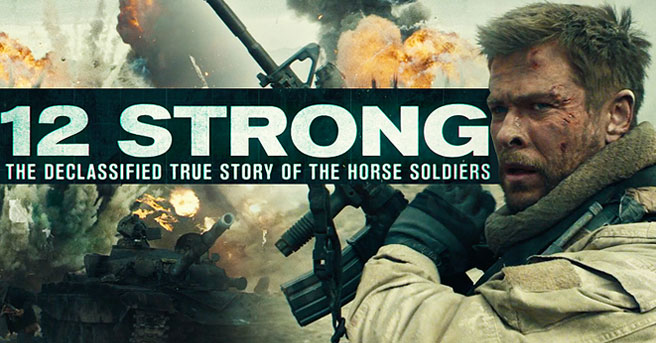
When imagining New Mexico it’s easy to put aside the images of brown dirt, brown cactus and, yes, even brown water, and instead have your imagination running with UFO’s crashing into the dirt, cowboys and Native Americans riding through the desert, and drug deals going wrong on BREAKING BAD. But today, and for the majority of the 43-day shoot, the cast and crew of 12 STRONG are picturing none of the above. This is Afghanistan – hostile terrain – and they’re about to ride into battle.
But for me, my ride through the Land of Enchantment started out much less dramatically. I lived in the state in the late 90’s from first grade into second, and being driven from the airport to the hotel was like getting blasted with a nostalgia gun that only made you recall the moments in your life you tried to suppress like an alcoholic on a bender. The tan/turquoise color scheme is one I hoped I wouldn’t have to experience ever again, but here it was, having it all rush through my mind as the cabbie shouts to me, “That’s the hotel where they shot BREAKING BAD!” I didn’t see it in time to be sure, but he’s probably right. The show has become a treasure in the state’s cultural history – I'm sure along with Bryan Cranston's tightey-whiteys.
The next day on the way to the shoot more memories from my childhood spent here came roaring by at 70 mph as we zoomed past barren plains. I felt like I was Charlize Theron in YOUNG ADULT, leaving the big city and returning to her quaint hometown with an air of smugness. Okay, maybe I'm not that bad, and I suppsoe it was a bit cathartic. I felt oddly at home when we got on location and began walking up the sand and dirt-riddled hill. That is until they screamed “Action!”
Then, a small battalion of scarf and rag-clad Northern Alliance soldiers came charging down the slope, armed to the teeth and shouting war cries. Below them is a tank graveyard, riddled with charred war machinery and littered with Taliban soldiers. It was a short shot, and one that would keep being filmed in the early hours of the day. Like the cast and crew, I was now in Afghanistan, and now it was time to talk to the people who helped make it all come to life – legendary producer Jerry Bruckheimer, production designer Christopher Glass and star Navid Negahban.
INTERVIEW WITH JERRY BRUCKHEIMER
How the project came about:
I think an agent brought us the book ["Horse Soldiers" by Doug Stanton]. I love these types of stories about guys who can sacrifice their lives to protect our freedom, and these 12 guys did it.
What makes this a “Jerry Bruckheimer picture”:
I like realistic looks and people in real stressful situations, and this is the most stressful as you can imagine. These guys were dropped in here without protection, no support, there were 12 of them, there were a few CIA guys who came in two days before they did, and there were $100,000 bounties on their heads, $50,000 on their bloody uniforms. They weren’t sure Dostum was gonna turn them into the Taliban because he supported the Russians. So they had no idea what they were getting into, and it was a secret mission, so if something happened no one would’ve known what would happen to them. And yet by November, they came in October, they had driven the Taliban out of Masar-i-Sharif. So it’s a pretty historic thing, and fortunately, none of our guys got hurt.
On if they will show 9/11 footage:
We’re not sure yet. When we get in the editing room we’ll figure out what we’re gonna put in. But there are televisions playing after it happens, so we’ll probably have some footage, sure.
On casting Chris Hemsworth, an Australian, as an American soldier:
You always try to get a great actor and he’s a great actor, and the nationality has nothing to do with it. Hollywood’s had fantastic British actors, Australian actors, that played Americans, and so we continue to do it.
Regarding what sets this apart from other war movies:
The mission itself is totally unique. You never see guys dropped behind enemy lines. Initially they were gonna send in like 50,000 troops, and Bush [George W.] was like “No, I don’t want to invade that country,” so they sent these four guys in to do it, and it’s the first time Hollywood’s made a movie about the Special Forces since the Green Berets. So they’re a really special group and they should be memorialized, along with the CIA guys, who risked their lives. In fact, one of them lost their lives right after the movie, in Masar-i-Sharif, in the prison there. Mike Spann was killed.
Matt Rooney: What’s it been like working with such a diverse, authentic cast?:
Oh, I love it, it’s great, got some wonderful actors. They’re from all over, and we took our time and care in casting them. So, it’s a lot of fun casting and something I get a lot of joy out of.
Why he thought director Nicolai Fuglsig, who makes his feature film debut here, was the right choice:
Well, he’s an adventurer. But he went into Haiti right after the earthquake, and he had a friend who was stranded on a rooftop, and he rented a helicopter and rescued him because no one else was going to. And he was a tank commander too, and a war photographer. If you see his commercial reel you’ll understand how talented he is. He’s got pathos, he’s a terrific shooter, he knows how to tell a story in a very short period of time, he’s very passionate, and he’s got a visual style I think is unique, which is always something I look for when we hire these directors.
On the biggest challenge getting the movie made:
Getting it made [laughs]. Also adapting the book, that was difficult. The book has a lot more characterization, which of course you can’t fit all of it into a movie, but you try to get as much in as possible.
Is there a mission to get this movie out into the world beyond the typical American audience:
Absolutely. It shows how the Afghans and Americans can work together against a common…they [Afghanistan] doesn’t want the Taliban there. I don’t know if you know how it works, but they go into these villages and they maim and kill, they give the gangsters a hundred dollars a week, who’re uneducated, take the money and the Taliban commander says, “You report to me, use these guns however you wanna use ‘em, but you report to me.” And they take over these territories that way. So, in Afghanistan is a country that has survived so many different regimes – they got through the Russians and Genghis Khan and on and on because they flip sides. Dostum did the same thing; he was with the Russians, saw how that didn’t work out and he joined us. They flip back and forth, and we have a scene where Dostum’s cousin is on the Taliban side, and he won’t bomb them until his cousin leaves. So…and this is all true.
**Meanwhile, gunfire and explosions are going off during a shoot.**
It’s like you’re in a war zone, huh? [laughs]
Matt Rooney: In adapting the book how hard has it been to stay historically accurate?
Yeah, we’re fairly accurate. There were a few things we did that could’ve happened that didn't, but we had some of the Special Forces guys, besides the author, work with us. We talked with the CIA officer who was the first on the ground, two days before the Special Forces went in. There was a lot of research, and Nicolai came here early and spent some time with the CIA guys. The real Dostum has contacted through letter and through the embassy and given us photographs, and Navid did a lot of research on it. Nelson and Spencer were here and kind of commented on what we were doing, so, we’ve included as many of the guys as we could.
Matt Rooney: What has it been like dealing with the elements? [A harsh volley of wind and dirt was on us during several interviews]
You’re watching us get through it [laughs]. It’s a short shoot. Whether it’s raining or windy we just shoot right through everything.
INTERVIEW WITH CHRISTOPHER CLASS
On the challenges of the film:
Yeah, a lot of the locations, like finding locations that look like Afghanistan, but in America. But then finding ones we can actually shoot in. A lot of times you can find a location but you can’t get any trucks there or any crew. You can find amazing locations up in the mountains, but then you have to balance the realities of filmmaking with the aesthetics. Some of the locations were very difficult anyway, and a lot of them have never been shot before. A lot of locations you end up using have been shot before, and some of our locations are like that, but for instance, the location we’re sitting at now [in the movie is called Bescham] has never been shot before. There’s the caves, the Tiangi Gap…
Where is this location in the film?
This is the Battle of Bescham, and this is kind of on their way…their ultimate goal is to get to Masar-i-Sharif, so they’re working their way towards that, and Bescham is on the way, and after that is then the big finale, it’s called the Tiangi Gap, and we shot that at Thurgood Canyon, in White Sands Missile Range, and that’s the big funnel before they get to Masar-i-Sharif. There are a lot of challenges when you work on a war movie, like finding the right tanks and the equipment. Our movie is a period movie, so it’s set in 2001, so there’s the challenge of making sure you have right uniforms, guns, and not showing technology that didn’t exist. Especially on the bases, like the K2 base and Fort Campbell headquarters, at that point, it’s straight-up period piece – with like old TVs and no flat screens. I think this is one of the first times they started using GPS on the battlefield, so, in the movie, they kind of make a deal out of it like “What are these things?” Things that we take for granted now. But the tanks and all you see down there are actually from Afghanistan, they’re Russian. The military won’t tell me how they got them [laughs]. I can only assume how they got them. They’re very kind to let us use them, we pulled them off of White Sands missile range, and they normally use them as targets, so they’ll fly F-16s or drones, or whatever top secret weapons, and blow them up. Some of them have been blown up, so a lot of our scenery has been blown up.
Does the whole movie take place in Afghanistan?
There are scenes…it starts out in America, on 9/11, it starts out in Kentucky…
*A horse is neighing in the background, a la YOUNG FRANKENSTEIN**
…the horse agrees [laughs].
Anyway…
So it starts in America right on the day of 9/11, and there’s turmoil, it shows, like “what are we gonna do? Who attacked us?” No one knows at the point who even attacked us, so they get us all the files, and it turns out of course it’s some entity in Afghan, is what they hone in on, and of course, now we know it was Al Queda and the Taliban. But the day of they weren’t sure, so our movie shows some of those scenes where they’re trying to figure it out, and once they hone in on Afghanistan they realize we don’t even have a plan for attacking Afghanistan. They just weren’t on our radar at that time. And then also a bit takes place in Uzbekistan, there was a base there, called K2, and that’s actually one of my favorite sets that I made. It was very…it seems simple enough to make a military base with a bunch of tents and stuff, but nothing’s been simple on this movie. We had real Chinooks, real Special Forces Chinooks came and landed and we had Black Hawks, and it was such a cool set, I loved it.
Matt Rooney: Can you walk us through what happened yesterday [in regards to the scene they shot]. We heard there were some explosions and some aircraft came in.
Yeah well, see…this movie…Oh, are they shutting us down?
Just then, Christopher was interrupted and told that Chris Hemsworth now had some free time to talk, and was being pumped
Glass: Aw come on! [laughs]
Hemsworth leaves and Glass re-enters:
On if there’s anything he hopes audiences notice:
Well, we went through great lengths to make these sets as authentic as we can. I think a lot of Special Forces people who actually served will see more things than the normal person. They’ll recognize a lot of the weaponry, even in the bases, some of the posters in the background we tried to make them period correct. We had a lot of consultants on this movie, and we actually talked to the guys who were in the actual mission this movie portrays. Like Dostum’s map is a prop that most people won’t pick up on, but we talked to people that were actually there, some CIA people – actually Navid [Negabahn] talked to Dostum – talked about this map that was made in Turkey when he was in exile, and it’s a map of Afghanistan, and that is what they use to plot all their battles, and that’s one of our…we try to be super authentic. All of the writing is in Russian, the Americans didn’t have American maps for Afghanistan, because we never planned to invade Afghanistan, so they were given a lot of Russian maps, and Dostum could speak Russian, and that was sort of there common language. Even all the arrows and battle movement signs and symbols and things are all authentic. But like I said, most of the movie we tried to make as authentic as possible.
Did they go to Afghanistan to search out potential shooting locations?
We did a lot of research to find out what Afghanistan looks like, and Afghanistan is a big country and it looks very different all over the place. But this movie is high-altitude, asymmetrical warfare, and it takes in a particular region that is mostly above the tree line, so we had to find a lot of locations that didn’t have a lot of trees. So the one we’re sitting on now, as you can see, not a lot of trees. That’s why we picked it. I found it ‘cuz we were driving on the freeway to another location and I looked over and I was like, “Look! Look at that mountain over there! Turn around now!” [laughs].
Were there other states outside of New Mexico they looked at:
Early on the producers honed in on New Mexico, even before I came on board. There are other states we probably could’ve shot this in, and it all could’ve looked somewhat similar. One of the things New Mexico has is White Sands Missile Range, and they actually train Special Forces and our military in those locations because it looks like Afghan, and the terrain is similar. So that was one of the draws for that, so we flew around in a helicopter – it was our first scout and I was hanging out the side, they had the doors open, and they were like, “Are you gonna get motion sickness?” I was like, “Hell no! Open it up, just drop me in. I’m ready to go!” So Nicolai [Fuglsig] and I flew for hundreds of miles over White Sands Missile Range, probably 20 feet off the ground over mountains, it’s called “mapping” I think when you scan and fly really low. So we scouted the whole place like that. One of the drawbacks of White Sands Missile Range is it’s an actual bombing range and so there re actual unexploded ordinances everywhere. So when we were driving we were like, “Okay, watch out for bombs that haven’t blown up yet.” We did find some, but they were removed. I think it’s kind of a perfect place to shoot this movie.
On if in picking a location they kept the horses in mind, for safety reasons:
Of course…yes, that’s the short answer [laughs]. The longer answer is for the horse safety is every location that we’ve chosen we’ve had to also have our horse wranglers come and visit. We have meetings and talk about it, like what’s safe for the horses and what isn’t. We made pathways; they’re hidden because we’re talented that way in the art department, especially in the Thurgood canyon battlefield, which I wish you could’ve seen. It was a huge, huge location, but we had to make specific roads that were for horses, some were for camera cars, some were just for our own production vehicles. But we always take into consideration the softness of the soil. We had to bring in soil, but then we try to make it look like a battlefield anyway. But that’s all a part of the movie magic. This particular location is all sand, which is tailor-made for horses’ hoofs.
On special safety tricks, considering animal wellness concerns that always exist:
We’re putting down fake metal debris, which is actually paper, but from a distance, it actually looks like sheet metal has been broken. The horses can just run right through that.
Why he picked this movie after JUNGLE BOOK and DARK TOWER, which are so different from this:
That’s the main reason, ‘cuz it is so different. I did THE DARK TOWER, which has some sort of battle sequences. I don’t think there’s a horse in that movie. I did THE JUNGLE BOOK, but that’s the main draw for me, is that it is something new, and I always wanna do something new and challenging. And I always wanted to do a war movie. I actually know Nicolai from commercials; I’ve done commercials with him, and once he offered the movie to me I was like, “Hell yeah, let’s go.” It’s a whole new aesthetic, and I don’t wanna be like a one-trick horse [laughs]. I could keep doing movies that are all animated and digital with talking animals, and it’s great, they’re very good, and I think we did a great job on THE JUNGLE BOOK. I just kinda wanna do more different things.
On the scene we saw today, which looked very old-school-war-movie:
Absolutely. The old-school war movie aspect is definitely conscious. The thing about this movie visually, and even thematically, is the old fighting the new, and the irony is that the U.S. forces are using horses to fight tanks the M-21 missile launchers. Obviously, they call in air strikes and B52s, which gives us the advantage, but the imagery of horses riding into battle, modern soldiers on horses going into burned out tank areas and fighting missile launchers…it’s this weird juxtaposition…it is a conscious visual aesthetic to have those two things kind of clash.
Any movie inspirations?
I don’t know about design, but a lot of the shots…we’re going an epic scale, and there’s always like LAWRENCE OF ARABIA, like the sequences in LAWRENCE OF ARABIA when they’re bombing the trains kind of comes to mind when they’re on horseback, and they blow out the rails and then they flee. I mean there is some BRAVEHEART in this – I guess that is an old movie now [laughs]. Don’t tell Mel [Gibson]. Mic Rodgers our stunt coordinator was of course on that, but those kinds of horse-charge movies always inform what we’re doing. I actually worked on THE LAST SAMURAI; I was a storyboard artist on that, so I boarded all the battle for that, so that’s also an influence. It is a very similar thematic thing, and we’re trying to bring all those together. We’re not saying “make it just like that,” it just comes to mind…the fact I worked on it always helped. Mic worked on BRAVEHEART, and always accuses me of copying him when we did LAST SAMURAI [laughs]. It’s kind of funny.
Anything up next?
I think I’m gonna take a break. I just did DARK TOWER for eight months and this for five months. Yeah, I need a break.
Are they gonna bring him back for JUNGLE BOOK 2?
It’s a good question, I don’t know. I’m not doing THE LION KING. I did this movie instead. Like I said I want to do something different. I love working with Jon Favreau, he’s fantastic and I hope to work with him again.

INTERVIEW WITH NAVID NEGAHBAN
On his character, Abdul Rashid Dostum:
Dostum grew up very poor. He’s an Uzbek. He’s been in war since he was 16 years old. He fought with Russians, for Russians. When the Russians took over he was part of the Afghan army. Crazy journey. He joined the Mujahideen, then Northern Alliance, and he was working with Ahmad Shah Massoud. Then something happened where Ahmad Shah gave territory to Hekmatyar, and then Dostum left. He went to Turkey for awhile, he went to exile. Then he came back and joined Ahmad Shah again, and he created his own territory, the Uzbek territory in the Northern part.
You hear lots of things about him in the news about how brutal he has been… But this man was the first to have a territory in Afghanistan to have schools for women, for girls. He was trying to Westernize his territory…The guys who were there during this time [who consulted on the movie] said he was the General Patton of Afghanistan.
It’s a fascinating character. Every day I learn something new about him. It seems like he had only a sixth or seventh-grade education, and…to this day he’s one of the most powerful people in Afghanistan. Because he’s a minority, he’s a vice president now, all the things they’re saying about him, the things he has done, war crimes and all that, all of that is by magazines who are the majority. They don’t want him to become president. So everybody is working against him to stop him.
On what was it like speaking to Dostum and trying to get his take on this story:
I’ve never had a direct conversation with Dostum. The only thing I had was a note from him. I talked to his ambassador, Mr. Ayoob Erfani, who flew in from Kabul to Istanbul, then to New York, Phoenix and here. He handed over a suitcase filled with wardrobe that Dostum wore during this incident. It was fascinating. They sent me a couple of the Uzbek hats, three different sizes. They’ve been very generous.
On if he thinks this story will be relevant to audiences today:
It is. Especially at this time. The wall is getting taller and taller for me. But of course. When you walk down the street, if you talk to a majority of the people, when you say Afghan, the first thing that comes to their mind is Taliban, Al Qaeda, war, terrorism, the bad guys, the guys who did 9/11. But when you get to know these people – on this set, we have an Uzbek officer who was fighting side by side with Dostum during this mission. He’s playing one of my men. I try to have him close to me because I also need his dialect. He has a very specific dialect when he speaks. He’s telling me stories. Kenny Sheard, who was in Afghanistan on a mission, he was a Navy SEAL, was telling me that in one of their missions, if it wasn’t for the warlord who was their contact person, all of them would have died. Because of all the Afghans, they came and created a wall to protect American soldiers for them to be able to move forward. Even Mark Nutsch was telling me that without the help of Dostum and all his men, they would have never been able to do what they did. So I hope we can show our audience, or tell our audience, or at least open a teeny tiny window. Or cut a hole in this dark curtain that separates us from each other for them to be able to see what has happened. And how these people gave their lives to protect American soldiers. Mike Spann was the only person who died from the team. The reason that he died was, when they were in Qala-i-Janghi, when they captured all the Taliban, when they freed Mazar, Dostum brought everybody to Qala-i-Janghi and when they brought him to Qala-i-Janghi, when they were interviewing the individuals, this person had a bomb, and they never searched them. There were so many people that they didn’t have time — to body search everybody. So I just hope what we are doing makes a difference. You never know. I don’t want to tell the people all the things, I just hope that they start thinking and that’s it.
On how much horseback fighting he got to do in the movie:
I’ve been on set since October and any chance that I get, I try to be on horses. I used to ride all the time, ten years ago. Ten, eleven years ago. I was so arrogant and full of myself. [I said] I used to ride horses! No problem. I will go there. The first week, I pulled my groin. Oh my gosh, it was so painful! I was walking like a duck. I couldn’t even move. Everything was wrapped and taped, just to be on the horse. The guys, they were laughing at me. [laughs] Now I’m doing okay. It’s already healed so it’s good. But I’m loving it. I love being on the horse.
On learning more about the characters:
These characters are fascinating. I could sit here and talk hours and hours. [refers to producer] I had books, I had videos, I got videos from a person, it was so bad that you couldn’t see the image, but you could hear their voices, the way that they were talking, the video was so old. I begged everyone, can you just transfer? Can you just make it so it works? Let’s see. Let’s hear. I think it is a huge responsibility when you are working on a project like this. You have to do all you can. I’m trying. Let’s say I’m trying.
On if this role was a departure from the other kinds of roles Middle-Eastern actor are offered:
I think — the thing is, I started my career in Germany, so I worked as an actor in Germany. I never saw myself as a Middle Eastern actor. I always saw myself as just an actor who is creating illusions. In Germany, I never had a problem. Here, I was —okay, it was very difficult. In the beginning, it was very hard. But right now? The characters have been very diverse. I think that we need more writers and more producers who are willing to take a chance because what makes America so beautiful is how colorful it is. We need to stop creating xenophobia, creating fear to sell a movie. What we need to do [is] we need to talk about the stories that are happening on an everyday basis. Just walking in Los Angeles, in Westwood when you are walking, you are in a completely different country. These are the things we need to be a little more responsible — it’s been difficult. There have been projects that, when I went there I went eh, no, I should walk away, and I walked away from them. This project, I think the reason that I took the project was the script. The first time when I read the script, it really brought tears to my eyes, just sitting and thinking what these guys were going through. And then I was in London. I talked to Nicolai via Skype. And what I saw in his eyes, and the passion and the way that he was speaking and I saw his heart I said, oh, I’d love to work with this director. I’d love to be a part of this movie. And that’s how I ended up here, just sitting here, having a chat. It’s been an interesting journey. Let’s see what’s gonna happen.
See, there was a story. There was a farmer. I think it was a Chinese story. There was a farmer. A horse was walking into his farm and everyone comes up to him and says, ‘Oh my God, you’re lucky. Now you have a horse.’ He says, ‘Oh, let’s see what’s gonna happen.’ Two days later the horse runs away and they say, ‘Oh, I’m so sorry your horse ran away.’ [The farmer says] ‘Oh, let’s see what’s gonna happen.’ His son goes and finds and brings the horse back and he’s riding the horse. ‘Oh, your horse is back. Your son is riding it. Congratulations, fantastic.’ He says, ‘Oh, let’s see what’s gonna happen.’ The son falls down and breaks his leg. ‘Oh, you have to kill this horse. The horse was very bad.’ ‘Oh, let’s see what’s gonna happen.’ The next day the Emperor comes and says all the first sons, they have to go to war. And the son has a broken leg so he doesn’t go to war. Everyone comes up and says, ‘Oh, let’s see what’s gonna happen.’ So, we did the movie. Let’s see what’s gonna happen.
On if the movie could play well outside the U.S.:
I hope so. That’s what I’m wishing for. You see, lots of Afghans are working with us on this project — I’m not going to mention other movies, but some of them, they worked on other movies. And when we approached them to be background, to be working with us on this project, they all turned us down. They didn’t want to work on this one. Mike [unit publicist] knows I’ve talked to the heads of all the families here in Albuquerque and explained to them what we are trying to do. What was important for me was that at least — first of all, America is famous for making propaganda movies. Especially Hollywood. So I’m just hoping that this one shows, no, okay, we are respecting, we are showing respect, we are acknowledging, we are honoring those people who put their lives on the line to help get rid of terrorism or war, to bring peace. So that is one of the things that we are hoping for. I just hope that — you never know. I mean, every movie, it doesn’t matter what movie you are watching, you are going to find one person who comes and says, ‘No. This is not right.’ But if you can get the majority — ultimately, this is a movie that is supposed to entertain you, is supposed to wake you up and is supposed to make you ask questions. If I can get you to ask two more questions, if I can get you as you are walking out of the theater together — you start talking to your friends and you say oh my gosh, I didn’t know that. This is what happened? This is where they were? So I hope so. I hope so. You never know what is going to happen.
Check out our page for Everything You Need to Know About 12 Strong and our interviews with Chris Hemsworth and more
12 STRONG rides into theaters January 19, 2018.



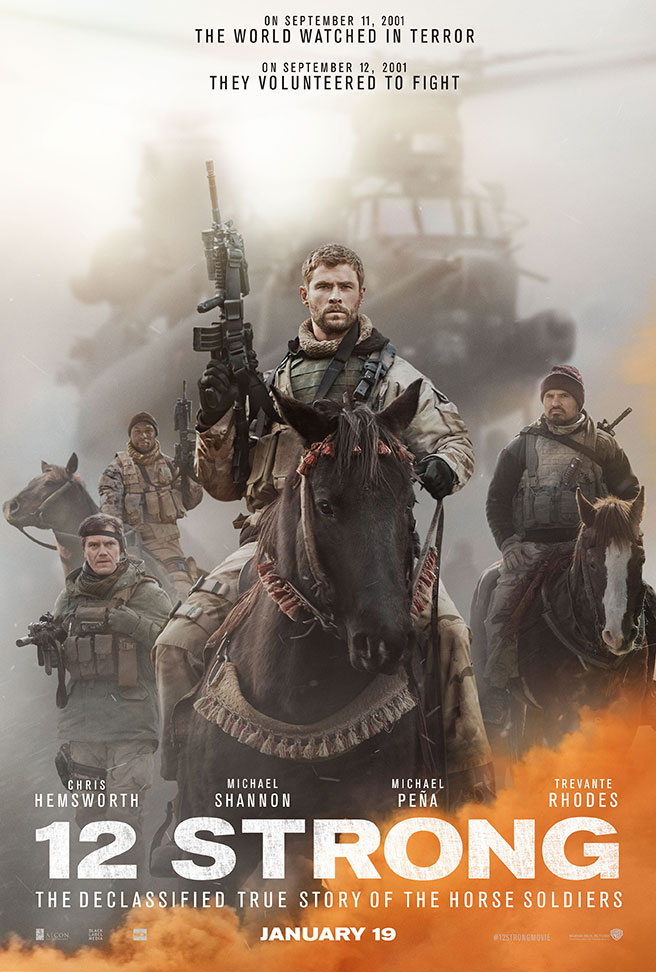




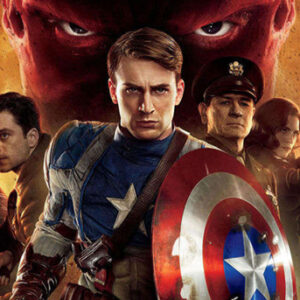
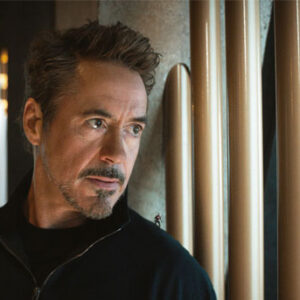
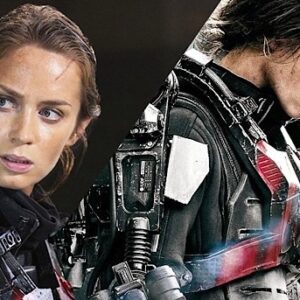
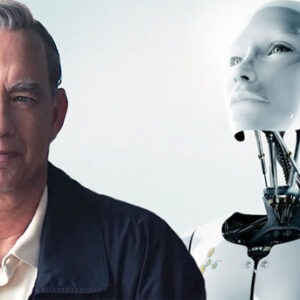

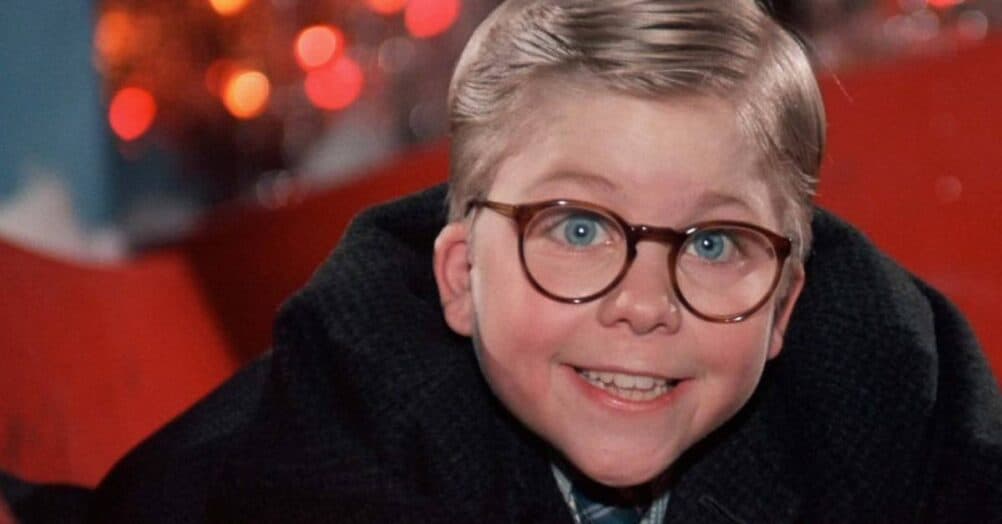








Follow the JOBLO MOVIE NETWORK
Follow us on YOUTUBE
Follow ARROW IN THE HEAD
Follow AITH on YOUTUBE